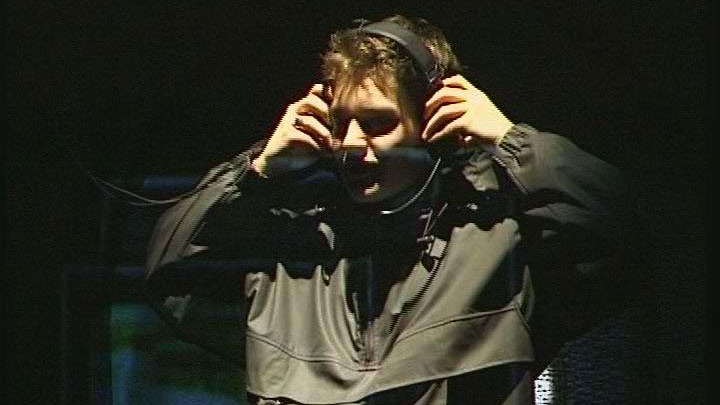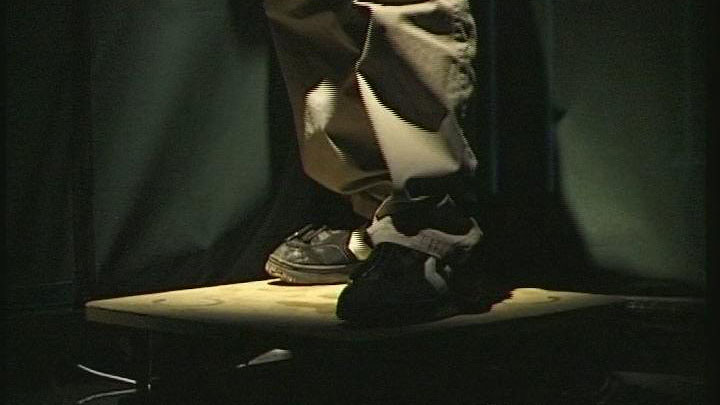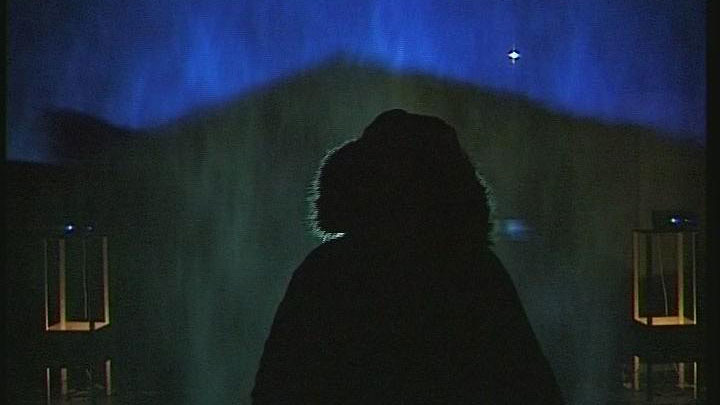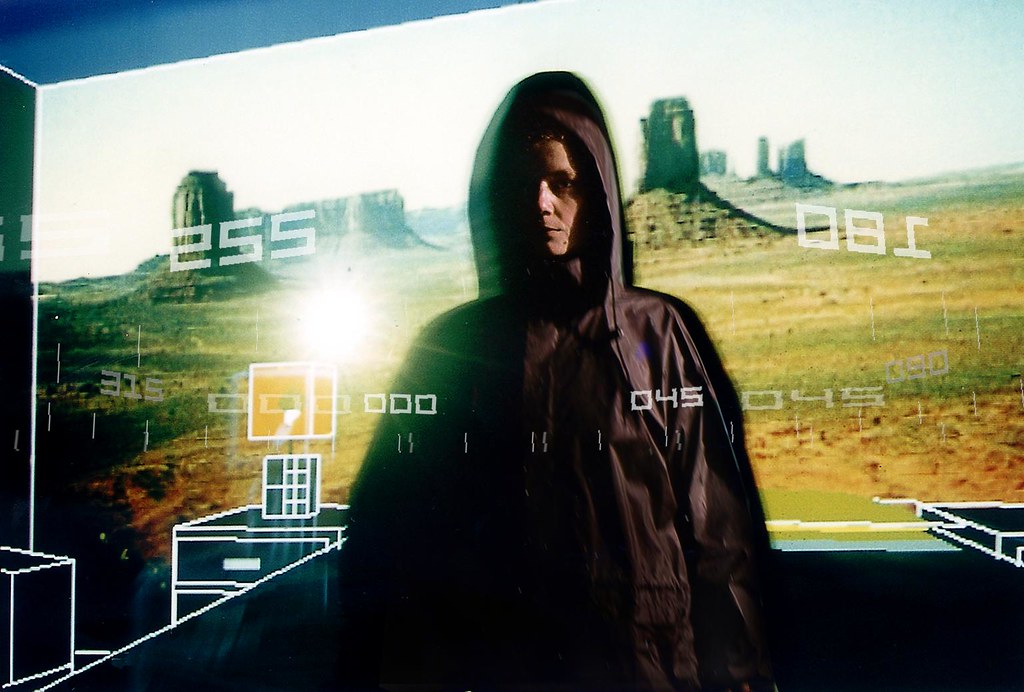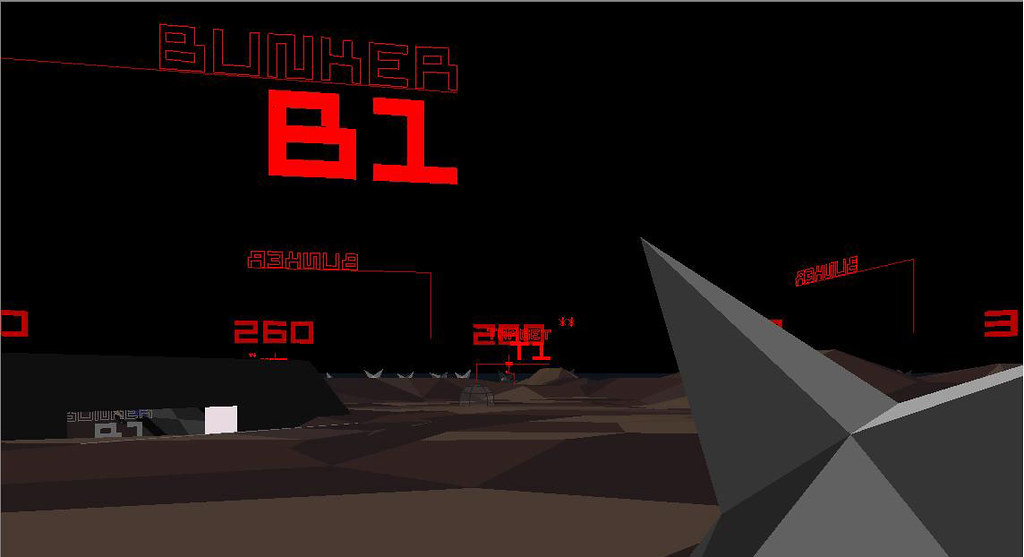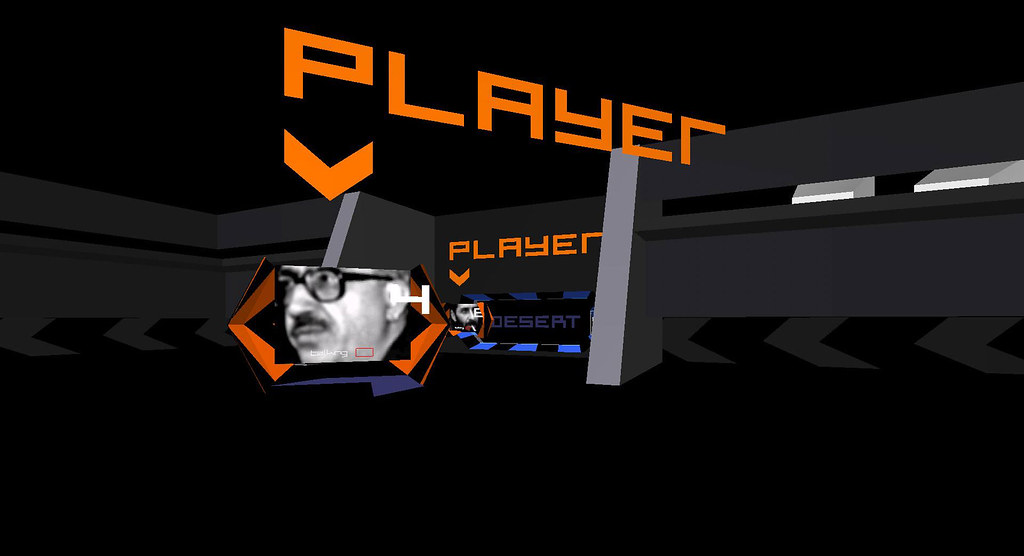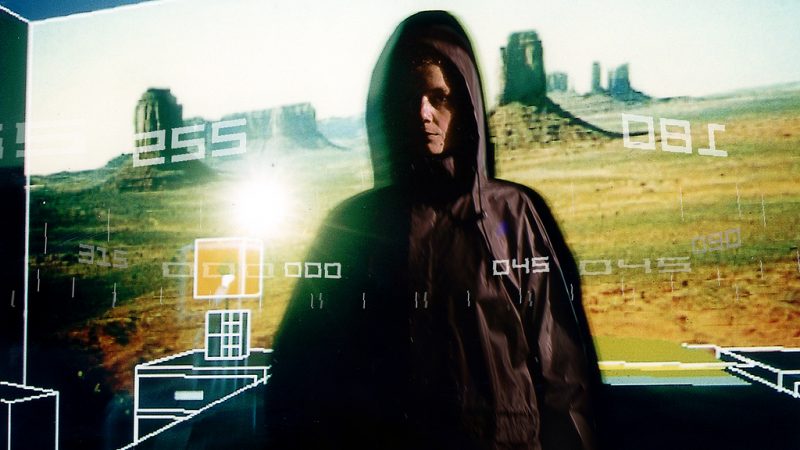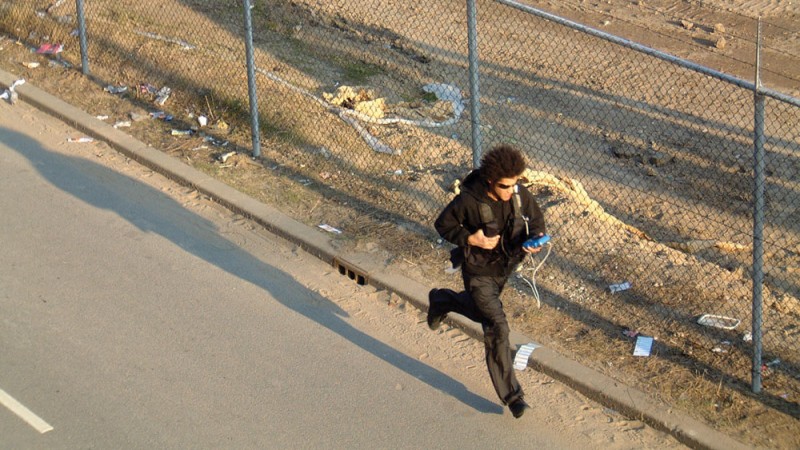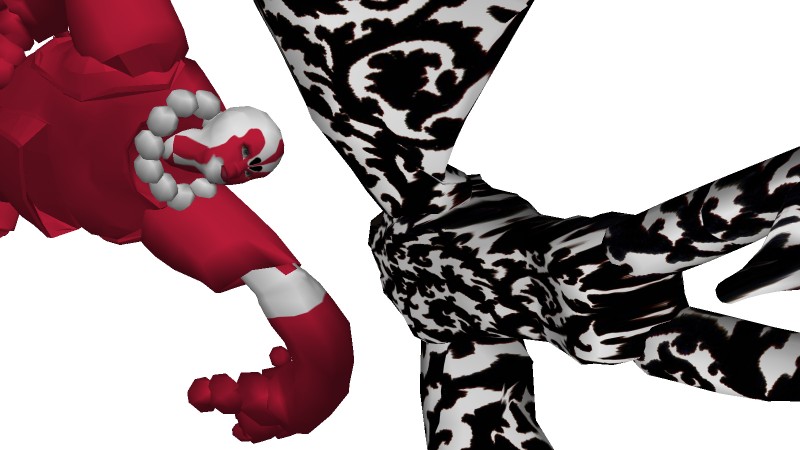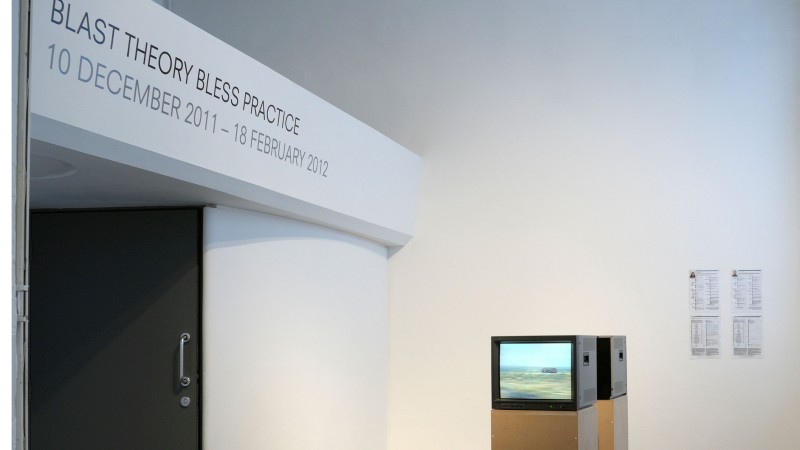Desert Rain was a mission for teams of six players. Standing on a footplate and zipped into a cubicle, each of the team members explored a virtual world projected onto a screen of falling water in front of them. Players had 30 minutes to find their target, complete the mission, and get to the final room, where others may have a very different idea of what actually happened out there. In a world where Gulf War images echo Hollywood images, where Norman Schwarzkopf blurs into Arnold Schwarzenegger, Desert Rain looked for the faint line between the real and the fictional. The project was Blast Theory's first collaboration with the Mixed Reality Lab at the University of Nottingham.
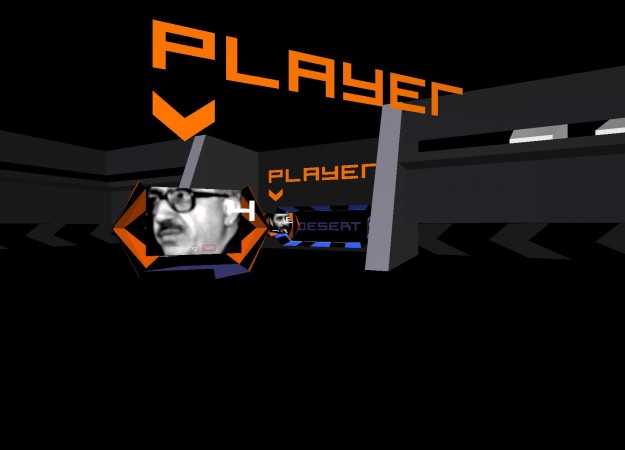
“one of the most complex and powerful responses to the first Gulf War to be produced within the sphere of theatrical practice.”
Gabriella Giannachi, Virtual Theatres
Desert Rain was, in part, a response to the assertion by French cultural theorist Jean Baudrillard that ‘the Gulf War did not take place‘ because it was a virtual event. Using a combination of virtual reality, installation and performance, it explored this boundary between the real and the virtual within a collaborative game environment.
On arrival, six players at a time entered a small antechamber and were given a swipe card for a person they had to find in the game – their ‘target’. They left their coats and bags, put on hooded black jackets, and were then led in total darkness into the next space. There, each visitor found themselves standing on a foot pad; in front of them was a rain screen, 4 metres across, providing a surface of fine water spray onto which the virtual world was projected.
The virtual world began with each player alone in an American motel room. Reaching the apparent safety of an underground network of bunkers and tunnels, the players came face to face with performers, fragments of the Gulf War, and each other. If they successfully found their target, a performer emerged through the water screen and handed them a second swipe card, granting them access to the next stage.
The final virtual environment was a vast underground hangar containing a floating field of numbers, all of which were estimates of Iraqi casualties. Players pushed their way through the densely packed numbers to reach the exit – the mission was only successful if all six exited together.
Players escaped by crossing through the water screens, leaving the virtual world behind and reaching an exit corridor, which was blocked by a large pile of sand. By climbing over this mound they reached the final room of the installation, where the walls were covered with full scale photographs of the walls of an English hotel room. The only objects in this room were a card reader and a monitor cut into the wall, in exactly the same position as in the virtual motel room where they started.
As each visitor swiped their card, their target appeared on a monitor sitting in the real hotel room whose photographs make up the walls of the installation. Each of the six targets has had their life changed by the Gulf War in some way: as a soldier, a journalist, a peace worker, an actor or a passive spectator. They talk about their relationship to the events, their proximity to them and how ‘real’ it felt.
On leaving, the players collected their coats and bags. At some point later they discovered a small bag of sand concealed in their coat or bag. The bag contained approximately 100,000 grains – one for each of the estimated victims of the Gulf War.
“one of the most successful and advanced digital performances of the late 90s… a seminal experimental production fusing the technological complexity of hard science skills with a truly original artistic vision.” Steve Dixon, Digital Performance
Artists’ Statement
Blast Theory, 1999
Whilst deeply suspicious of the kind of theoretical position asserted by Baudrillard, Blast Theory recognise that this idea touches upon a crucial shift in our perception and understanding of the world around us. It asserts that the role of the media, advertising and of the entertainment industries in the presentation of events is casually misleading at best and perniciously deceptive at worst. As Paul Patton says in an essay about Baudrillard, “the sense in which Baudrillard speaks of events as virtual is related to the idea that real events lose their identity when they attain the velocity of real time information, or to employ another metaphor, when they become encrusted with the information which represents them.”
In this sense, while televisual information claims to provide immediate access to real events, in fact what it does is produce informational events which stand in for the real, and which “inform” public opinion which in turn affects the course of subsequent events, both real and informational. As consumers of mass media, we never experience the bare material event but only the informational coating which renders it “sticky and unintelligible like the oil soaked sea bird”.
This reference to the “oil soaked sea bird” as an icon that stands in for the reality of an oil spill (and which, in effect, distracts attention from and even masks entirely the real complexity and significance of the events surrounding an oil spill), gives a direct example of the ways in which these processes affect us every day.
While these ideas form the backdrop to Desert Rain the piece is not intended to be a demonstration of this theory merely to accept its significance in informing our view of the relationship of the real to the virtual and especially in its assertion that the virtual has a daily presence in our lives.
Indeed we also have a great interest in those who have coruscatingly attacked Baudrillard’s ideas as “absurd theses” which are “ill equipped to mount any kind of effective critical resistance”The role of the cinema, particularly Hollywood, in this process is also important. As a vehicle for dreams, aspirations and fantasies, films play a major role in affecting our self image and as a source of inspiration.
The key motif of the individual overcoming all odds to triumph is a touchstone for our culture and has an impact on real life. Arnold Schwarzenegger and Norman Schwarzkopf both exemplify certain aspects of leadership, for example, and each draws on the attributes of the other.
Desert Rain therefore attempts to bring visitors to a new understanding of the ways in which the virtual and the real are blurred and, in particular, the role of the mass media in distorting our appraisal of the world beyond our own personal experience.
I can guarantee that you will come out changed and humbled…utterly gripping…a brilliantly judged experience
The Scotsman
Desert Rain was a collaboration between Blast Theory and the Mixed Reality Lab, University of Nottingham. It was originally co-commissioned by Contemporary Archives and ZKM Centre for Arts & Media (Karlsruhe, Germany) in association with DA2 (Bristol) and KTH (Stockholm, Sweden). It is supported by the Arts Council of England and the European Commission’s Kaleidoscope Fund for NOWninety9.
It was nominated for an Interactive Arts BAFTA Award in 2000 and received an Honorary Mention at the Transmediale Awards in 2001. It has toured internationally including the UK, Central and Eastern Europe and Australia with support from the British Council.
